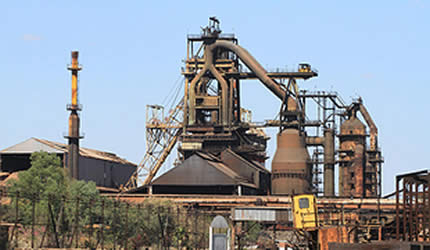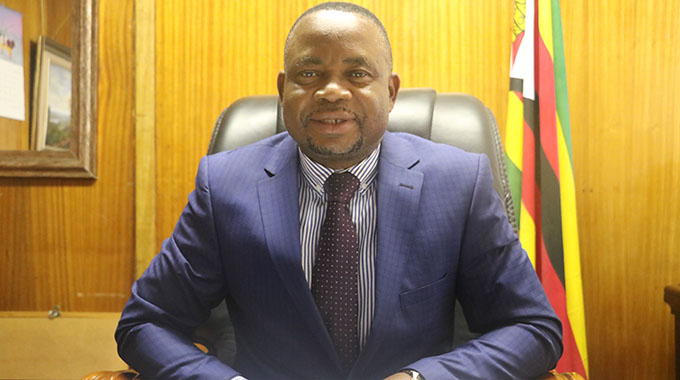Your questions answered

 With the 34th Sadc Summit to be held in Victoria Falls on Sunday and Monday just a few days away, below are answers to some of the frequently asked questions about the regional bloc.
With the 34th Sadc Summit to be held in Victoria Falls on Sunday and Monday just a few days away, below are answers to some of the frequently asked questions about the regional bloc.
What is Sadc?
Sadc stands for Southern African Development Community and is a political and economic institution that provides a framework for regional integration in the region.
How was Sadc formed?
Sadc was born out of the Frontline States whose objective was to ensure the political liberation of all Southern Africa’s member states. Sadc was preceded by the Southern African Development Co-ordination Conference (Sadcc), which was formed in Lusaka, Zambia, on April 1 1980 with the adoption of the Lusaka Declaration.
The formation of Sadcc was the culmination of a long process of consultation by the leaders of the then only seven majority-ruled countries of Southern Africa: Angola, Botswana, Lesotho, Mozambique, Swaziland, Tanzania and Zambia, working together as the Frontline States.
In May 1979, consultations were held between Ministers of Foreign Affairs and Ministers responsible for Economic Development in Gaborone, Botswana.
Subsequently, a meeting was held in Arusha, Tanzania, in July 1979 which led to the establishment of Sadcc on April 1 1980.
On August 17 1992, at their Summit held in Windhoek, Namibia, the Sadc Heads of State and Government signed the Sadc Treaty and Declaration that effectively transformed the Sadcc into Sadc.
The objective also shifted to include economic integration following the independence of the rest of the Southern African countries.
Who are Sadc Member States?
Sadc is made up of 15 member states, namely: Angola, Botswana, Democratic Republic of the Congo, Lesotho, Madagascar, Malawi, Mauritius, Mozambique, Namibia, Seychelles, South Africa, Swaziland, Tanzania, Zambia and Zimbabwe.
How does Sadc implement its operations?
Sadc operations are centralised at the Sadc Secretariat in Gaborone, Botswana, since the 2001 restructuring process that has done away with the member state-based Sector Co0ordinating Units (SCUs) that were co-ordinating the 21 sectors of regional integration.
It provides operational facilitators support as the executive arm of the Sadc organisational structure consisting of eight directorates, namely, the Directorate of the Organ on Politics, Defence and Security Cooperation; the Directorate of Trade, Industry, Finance and Investment; Directorate of Infrastructure and Services; Directorate of Food, Agriculture and Natural Resources; Directorate of Social and Human Development and Special Programmes; Directorate of Policy, Planning and Resource Mobilisation; Directorate of Budget and Finance; and, Directorate of Human Resources and Administration.
There are also five stand-alone units responsible for cross-cutting issues, namely, Internal Audit, Information and Communications Technologies, Gender and Development, Legal Affairs and Public Relations established by the Council of Ministers as provided for by Article 15 (4 and 5) of the Sadc Treaty.
What is the population of Sadc?
The Sadc region has a population of almost 258 million that generates a Gross Domestic Product (GDP) of US$471,1 billion.
What is Sadc’s vision?
Sadc’s vision is that of a common future within a regional community that will ensure economic well-being, improvement of the standards of living and quality of life, freedom and social justice and peace and security for the people of Southern Africa.
This shared vision is anchored on the common values and principles and the historical and cultural affinities that exist between the people of Southern Africa.
What is Sadc’s mission?
Sadc’s mission is to promote sustainable and equitable economic growth and socio-economic development through efficient productive systems, deeper co-operation and integration, good governance, and durable peace and security, so that the region emerges as a competitive and effective player in international relations and the world economy.
How does Sadc plan to tackle poverty?
The Regional Indicative Strategic Development Plan (RISDP) and the Strategic Indicative Plan for the Organ (SIPO) remain the frameworks for Sadc regional integration that provide Sadc member states with a consistent and comprehensive programme of long-term economic and social policies.
The RISDP reaffirms the commitment of Sadc member states to good political, economic and corporate governance entrenched in a culture of democracy, full participation by civil society, transparency and respect for the rule of law.
What is the Sadc Summit?
The annual Summit of the Heads of State and Government is Sadc’s highest decision-making body. It makes decisions by following the consensus principle. Leadership is overseen by a Troika. The current chairperson is supported by his/her predecessor and successor.
The Summit is convened annually – usually in August – but can also be summoned more frequently to tackle urgent cases.
What is the Council of Ministers?
The Council of Ministers is the second highest level of authority and the highest functional level in Sadc. It consists of one national minister from each member state.
The Council of Ministers advises the Summit and always meets before the Summit takes place. The Council of Ministers oversees the work of Sadc’s five directorates.
What is the Sadc Treaty?
The Sadc Treaty is the main framework for regional integration in the region. Adopted in Windhoek in 1992, its principles include democracy, human rights, peace and national sovereignty. Its objectives are focused on developmental goals, poverty reduction and collective self-reliance, amongst others.
The Treaty was amended in 2001 at an extraordinary summit in Windhoek to include changes to the Sadc structure and introduce the principle of a Troika leadership.
The review also included the adoption of the Common Agenda and the RISDP. – Herald Reporter/sadc.int.








Comments